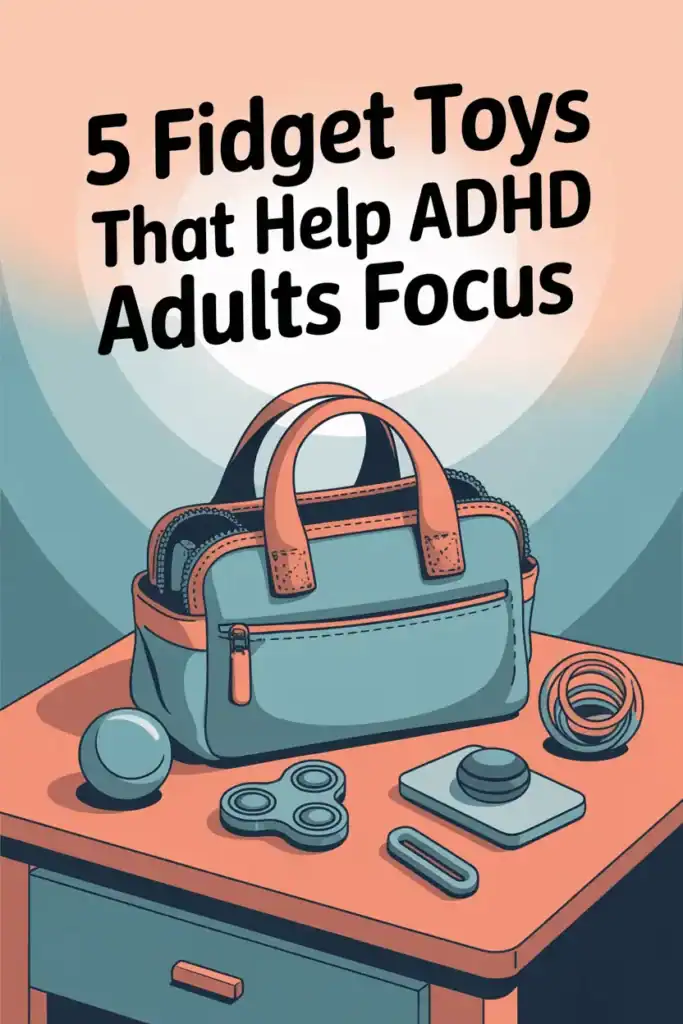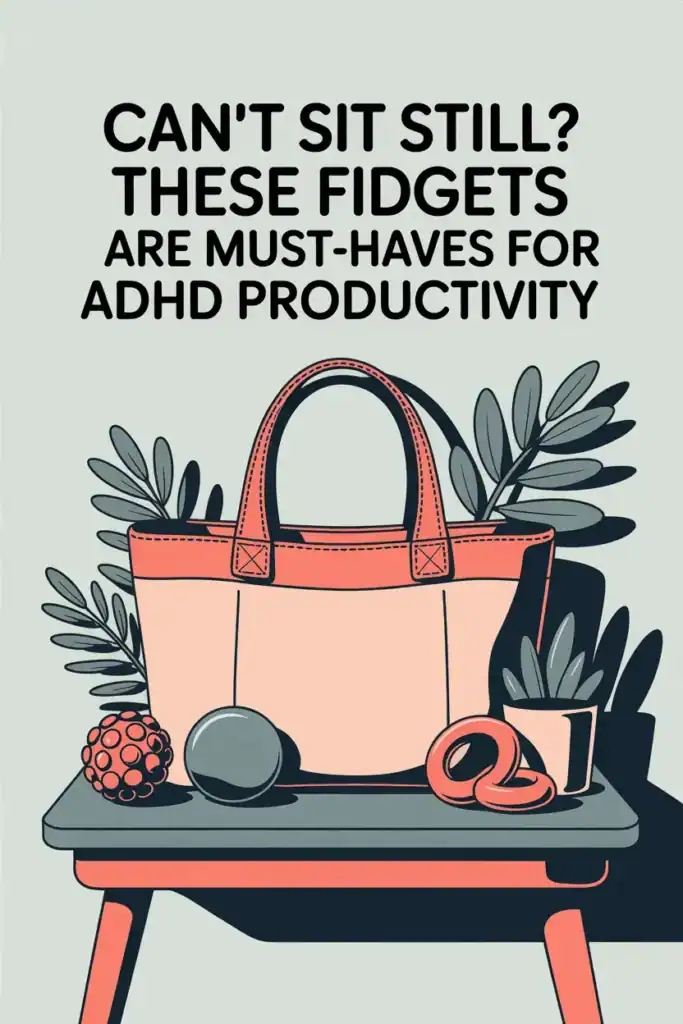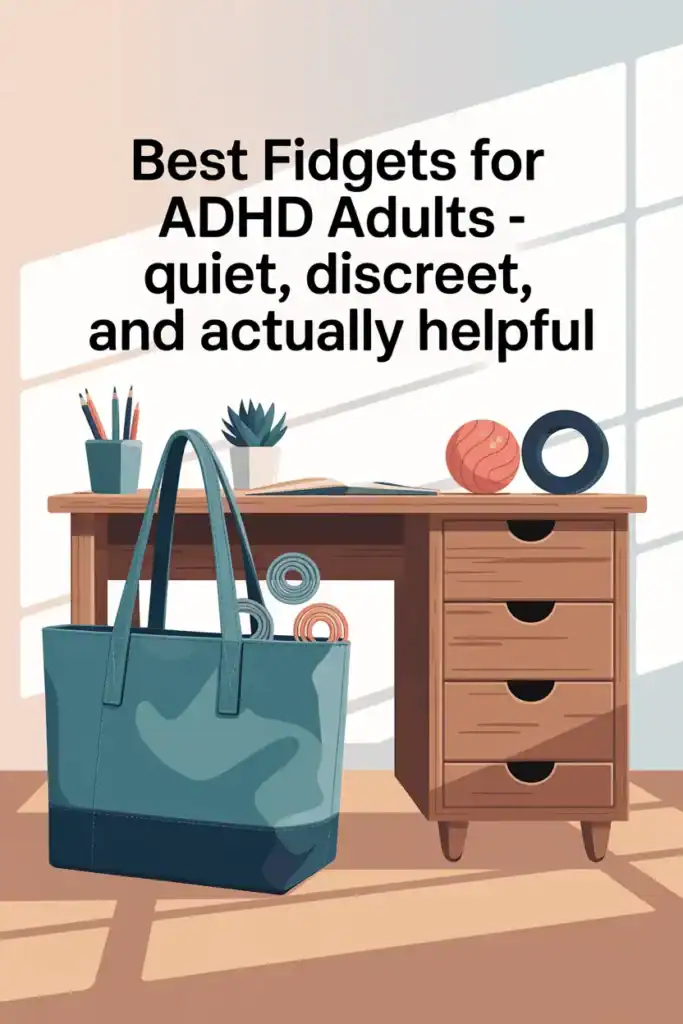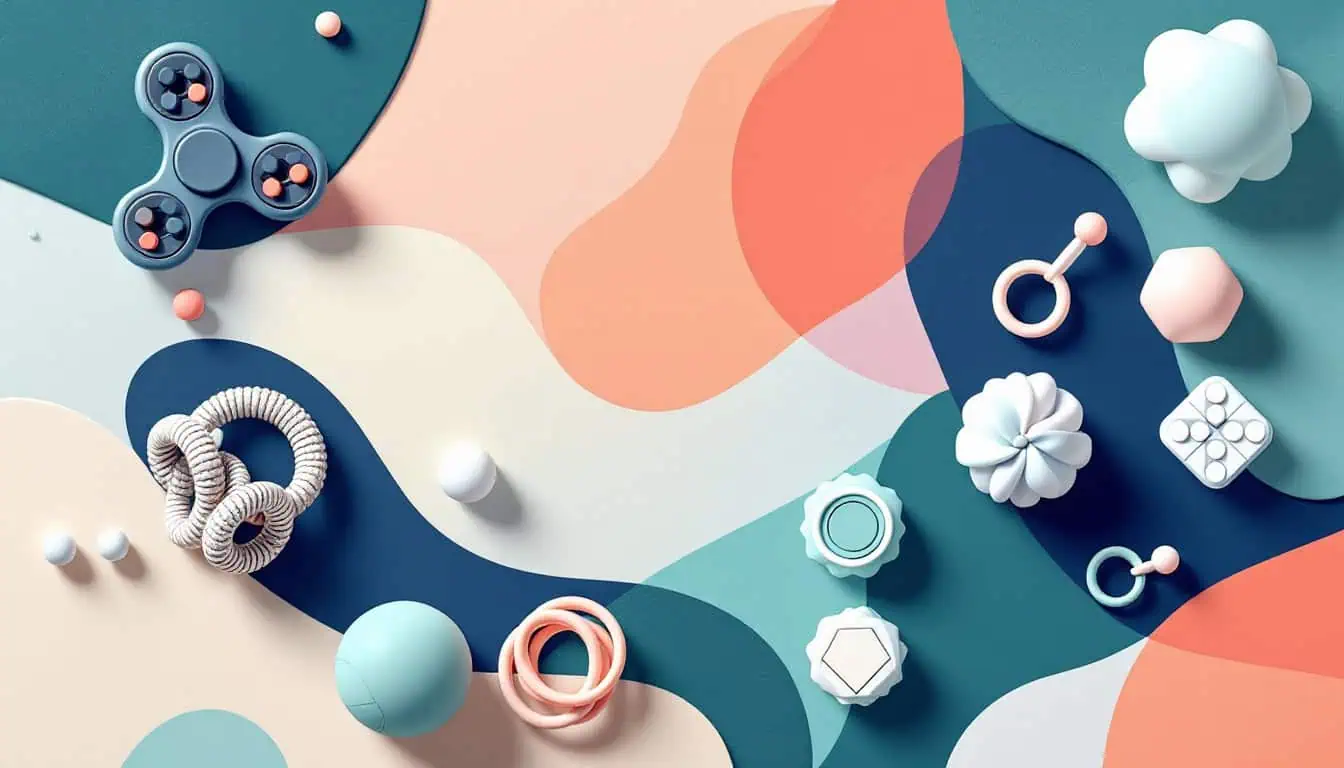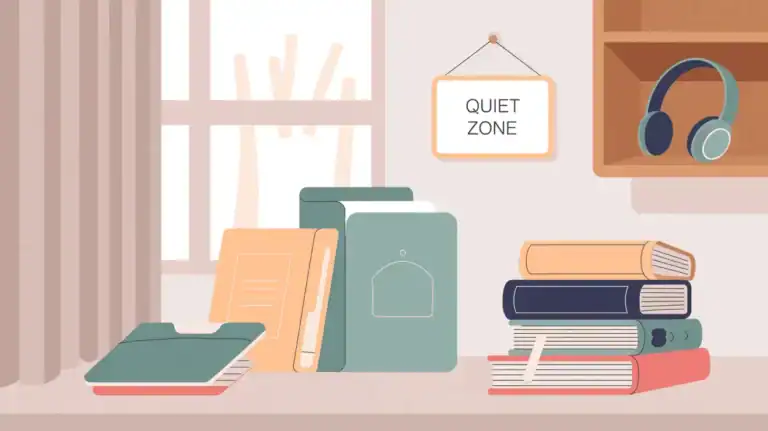5 Focus-Boosting Fidgets and Tips for ADHD Adults
Do you constantly look for what to do with your hands, especially during non-essential meetings?
You are not alone.
Fidgets for adults with ADHD can help alleviate some of that restlessness.
Read on for tips and a few helpful recommendations!
Fidget Toys: A Helpful Tool for Adults with ADHD
I've had a couple of fidget toys that I’ve enjoyed, but I wanted to learn more about other options.
I'll include my impressions of how they worked for me.
Hopefully, this will help you make a choice as well!
Fidget toys can be tactile, squishy, or textured objects designed to keep your hands busy.
They might spin, create vibrations, or flap back and forth.
Think about all those staff meetings we had on Zoom.
How many of us had something to keep our minds sharp?
I certainly did.
These toys come in various shapes, sizes, and textures.
So you can find what feels right for you!
Sign up here for your free ADHD in Women Checklists guide!

Benefits of Fidgets
Improving Focus:
Engaging with fidget toys can help redirect excess energy, allowing you to concentrate better on tasks at hand.
Reducing Stress:
Calm your nerves with tactile pressure that you find soothing.
Enhancing Productivity:
By satisfying the need for movement discreetly, fidget toys can help boost productivity and task completion.
Types of Fidget Toys
Tactile Fidgets:
Stress balls, cubes, or raised stickers that provide sensory feedback through touch.
Fidget Spinners:
Handheld gadgets with spinning components that offer visual and tactile stimulation.
Sensory Rings:
Textured rings designed to soothe nerves during stressful moments.
More Options:
Magnetic fidgets, bendable toys, smooth rolling fidgets — anything you can manipulate easily in your hand.
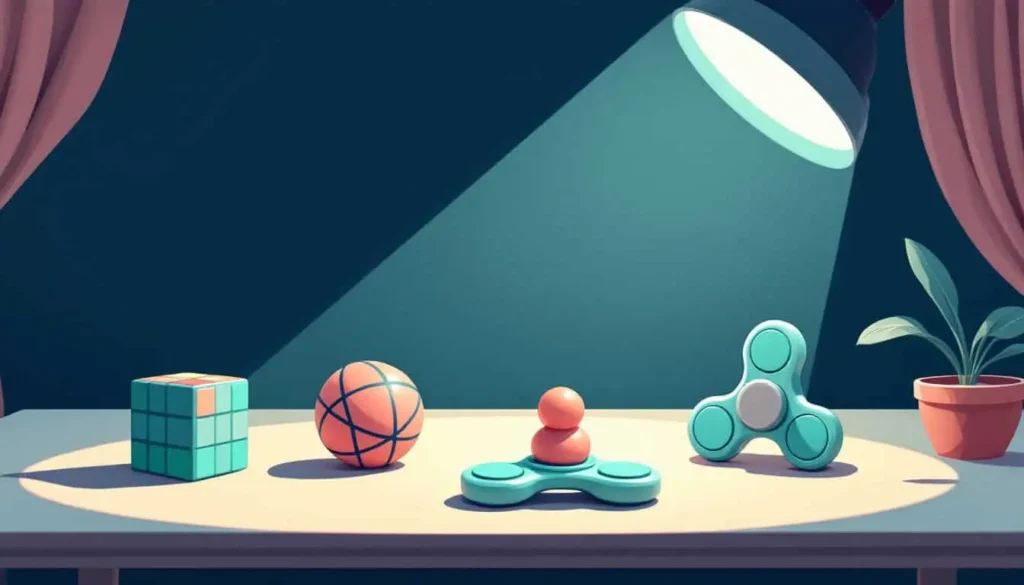
One of the best things about fidgets is that you can find some that are silent and fit discreetly in your palm.
So if you want to stay low-profile during a meeting or class, you’ll probably find one that works for you.
How Fidget Toys Help
Fidget toys come in a range of textures, shapes, and sizes, appealing to different sensory preferences.
Do you like heavier weights? What about clicks? The way a joystick fits by your thumb?
Fidgets can calm your nerves in ways that are more subtle than other forms of movement.
Do you ever absent mindedly tap your pen on the table?
A fidget like a bike chain model might satisfy the same need — with less self-consciousness.
Of course, fidgeting is natural and important for people to do.
Some prefer doing so discreetly, but it's personal preference and based on circumstances.
Top Fidget Toys for Adults with ADHD
Here are some top fidget toys you might want to check out:
1. Fidget Cubes
Fidget cubes are compact, versatile gadgets offering sensory activities like clicking, spinning, and rolling.
They provide a way to fidget during meetings or tasks that require concentration.
Different features like rolly balls, joysticks, and smooth surfaces engage multiple senses.
My thoughts: These have been useful for me, when I remember to use them.
I like the texture, the choices of actions, and the size — perfect for smallish hands.
You can usually find a good fidget cube for under $15–$20.
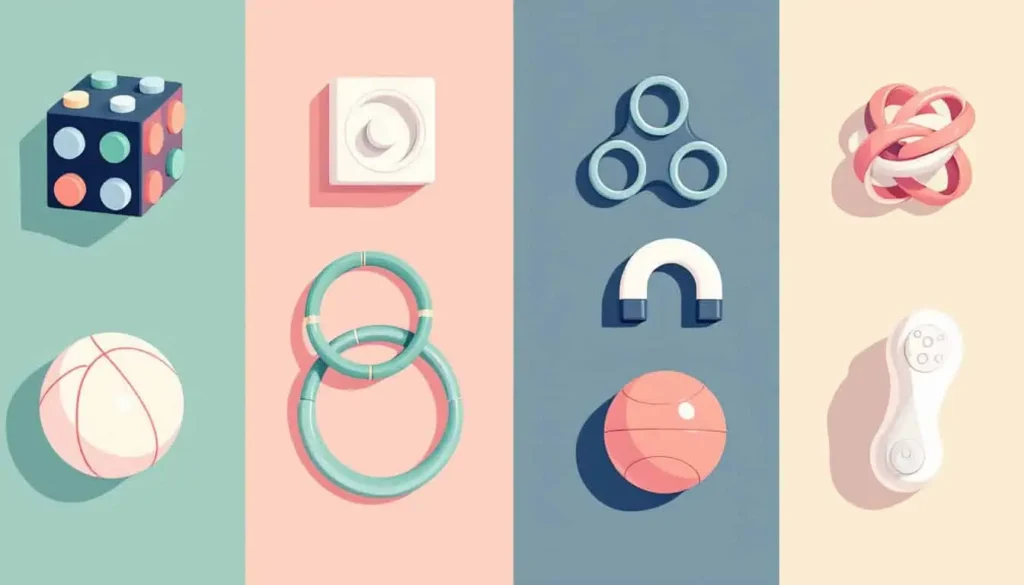
2. Stress Balls
Stress balls are classic fidget toys that help release nervous energy.
Squeezing them can provide a calming effect and improve focus.
Personally, I haven’t found many that appeal to me.
Except for this style, which is the beaded squeeze ball.
I haven't used this exact brand, but this is the basic idea.
I had two in my classroom that mysteriously vanished, they were so popular.
The best ones have actually been from dollar stores, and weren’t labeled as stress balls.
Some I ordered online were too firm and not very squishy — more like occupational therapy tools — which didn’t work for me.
3. Spinner Rings
Spinner rings are stylish and functional fidget accessories.
The spinning motion can feel soothing and help you stay calmer.
If you already enjoy wearing jewelry, these could be a good fit.
(They’re not for me, but many people love them.)
4. Tangle Toys
Tangle toys are flexible tools made of interconnected curved pieces that twist and turn.
I haven't used these much because I think they'd drive me a little crazy, which would defeat the whole purpose for me.
But maybe you’d enjoy them! Everyone’s different.
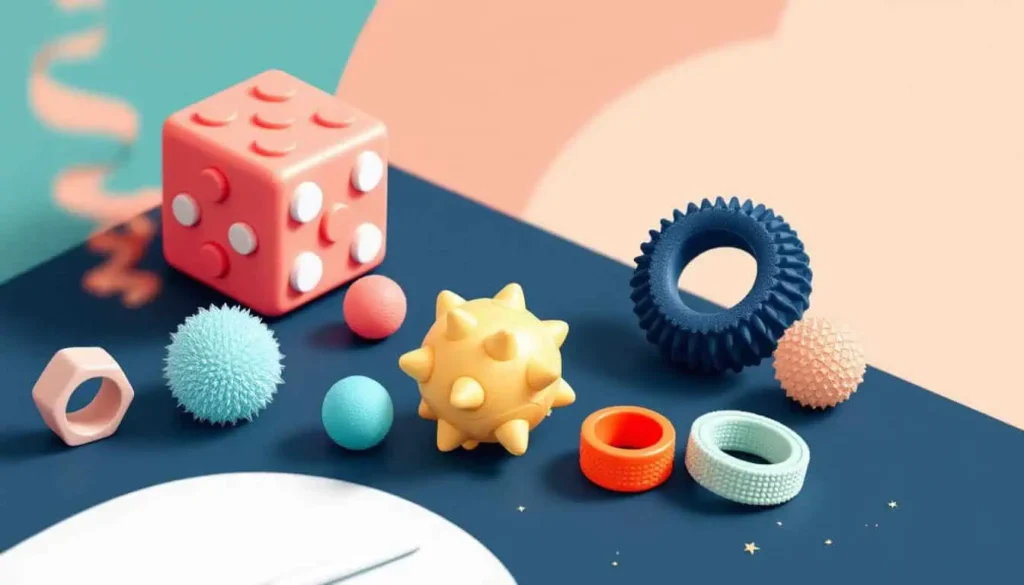
Choosing the Right Fidget Toy
When it comes to selecting the right fidget toy, there are a few things to keep in mind.
(Try to choose ones with a good return policy, because you really won’t know until you try.)
1. Textural Preferences
Do you want something bumpy or smooth?
Soft or rough?
It makes a big difference.
2. Noise Tolerance
If you have sensitive hearing, avoid toys that click loudly.
Look for smooth stones, soft stress balls, or spinner rings instead.
3. Portability and Durability
Choose fidget toys that are easy to carry and can handle frequent use.
Bonus if they survive curious kids grabbing them!
4. Experiment with Shapes
Explore different sizes and shapes to find the most comfortable option for you.
5. Seek Input from Other Adults with ADHD
Reach out to friends or join online communities for recommendations.
Teach with ND has a Facebook group that's perfect for this!
Ask around — you might discover new favorites!
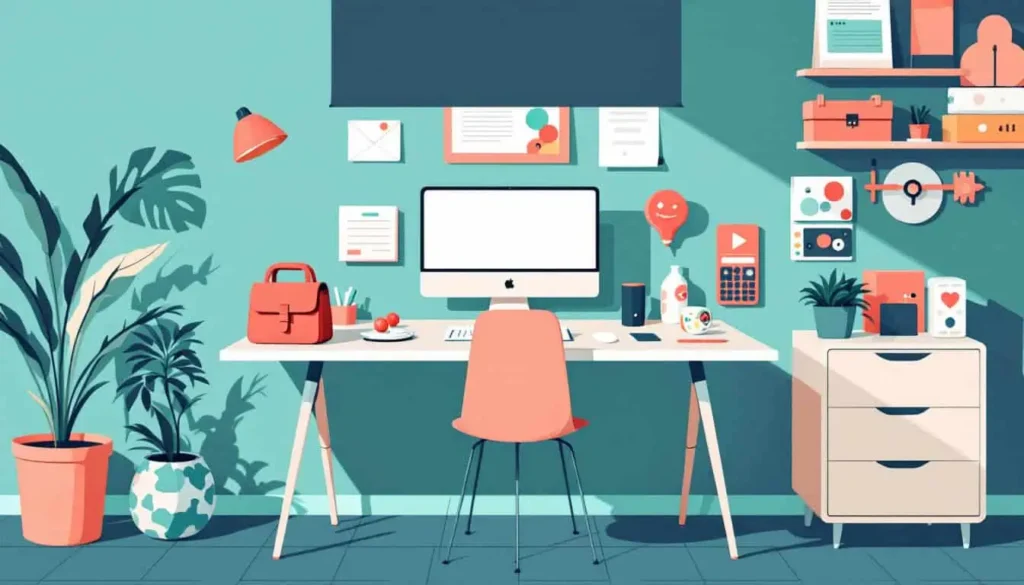
Incorporating Fidget Toys into Daily Life
Here are some easy ways to fit fidgets into your routine:
1. Desk Essentials
Once you find a favorite, keep it handy at your desk.
That way you won’t have to search when meetings drag on.
Pro tip: Set a reminder to leave them at your desk so you don’t accidentally walk off with them.
(Does that always happen for me? Maybe.)
2. Travel Companions
If you commute or travel frequently, stash an infinity cube in your bag.
You’ll be ready when you need it.
3. Stress Relief Breaks
Bring a fidget toy along during walks or phone calls with friends.
If meditation is tough for you, try rolling your foot on a tennis ball-sized object while you sit.
(Not technically a fidget, but it can help extend your session.)
4. Meeting Mindfulness
In in-person meetings, use a subtle fidget like a fabric tube with small balls inside.
For me, these fit nicely in my hand and helped calm my nerves without drawing attention.
Potential Drawbacks
It’s important to listen to yourself about how using fidgets feels in different settings.
Only you know what makes sense for you.
Overall, though, I don't feel there are many major negatives to using them.
Takeaways
Fidgets can be another tool in your toolkit for managing ADHD symptoms.
There are tons of types to choose from.
Keep experimenting with different textures, shapes, colors, and sounds until you find what you like.
Keep multiples in different locations so you're never left scrambling.
Join the Community
Want to connect with other like-minded educators?
We share ideas, ask for help, vent, and generally support each other.
Visit our Facebook group and take it one step at a time.
You've got this! ❤️
Found Something Helpful? I'd Be So Grateful If You'd Please Pin One of These Images!
It truly helps my blog reach more teachers like you. Thank you!
